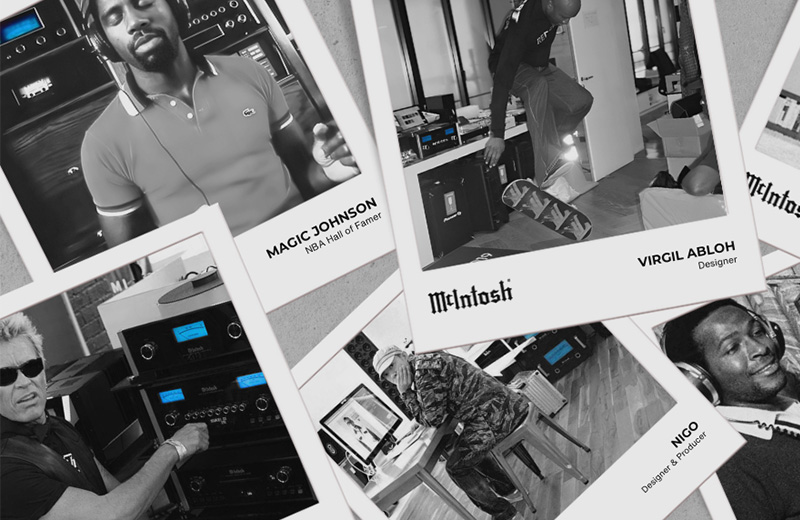There are some reviews that capture what we love about audio, and this one by Jason Victor Serinus finds its way into our list. Keep reading for the complete review.

The Momentum M400 MxV Mono amplifier ($79,500/pair) is the latest iteration of Dan D'Agostino Master Audio Systems' debut amplifier of 2011, the Momentum Mono amplifier. Weighing 95lb, it is smaller and lighter than its entry-level sibling, the more powerful, 125lb Progression M550 Mono amplifier ($47,500/pair), and is veritably dwarfed by some other monoblocks, including the flagship D'Agostino Relentless Epic 1600 (570lb) and the Karan Acoustics POWERa mono (231lb), which I reviewed in May 2023. But if the M400 MxV's rock-solid look and feel and its exquisite aesthetics—a sleek amalgam of silver and copper fronted by a power meter that glows green and radiates Rolex quality—are any indication, a helluva lot is going on beneath its showy exterior.
Once I took a listen, I discovered sound so smooth and satisfying that the refrain "How ya gonna keep 'em down on the farm / After they've seen Paree," from a WWI-era song about soldiers not wanting to return to their family farms after experiencing big city life in Paris, kept playing on repeat in my head.

Direct from Cave Creek
What kind of amplifier is this that distracted me so from watering the cows and milking the chickens? D'Agostino's website offered a few clues. The Momentum M400 MxV is hand built; it includes discrete, direct-coupled, balanced circuitry and boasts a "new, ultra-quiet 2200VA linear transformer" with a winding scheme that is said to reduce the hysteresis effect by 90%, minimizing power and thermal loss. The new winding method also plays a role in increasing current capability by more than 50% and "offer[ing] greater headroom during dynamic passages," which is surely aided by a bank of nearly 100,000µF of supply capacitance. All that adds up to potential output power of 400, 800, and 1600W into speaker loads of 8, 4, and 2 ohms, respectively.
For additional insight, I turned to the man himself, Dan D'Agostino, whose early designs (with Krell Industries, which he founded) redefined high-end sound. In a phone conversation spanning topics from audio to aging, we discussed the design principles behind the Momentum M400 MxV monoblock.
"The goal with the Momentum was to make something that looked very pleasing physically and had plenty of power to drive any speaker," Dan said. "The other goal was to make the Momentum sound as good as it possibly could. I didn't care about cost or labor; I threw in whatever technology was needed.
"The MxV upgrade is the biggest improvement I've made to the Momentum in the 12 years of its existence. The Relentless is clearly the best amplifier we have sonically, but it's also the most powerful. I love the Momentum chassis, but its size dictates how much power I can get out of it. At more than 400W into 8 ohms, we're pretty much at the peak. It's a very, very powerful amplifier in that package, and it's chock-full of technology from the Relentless."
According to D'Agostino's website, the Momentum M400 MxV's input stage has been "re-envisioned," with new circuit topology and new bipolar transistors said to deliver "ten times the current and power of the original devices." These components, the website claims, "extend low and high frequency performance with reduced distortion in both frequency extremes."
The M400 MxV's driver stage is completely different from the one in former Momentum models or the current Progressions. It implements the Relentless line's "inter-digitated style of driving output devices," as Dan put it, which uses multiple high-current drivers. "At idle, it's not doing much work," Dan explained, "but when it's playing music, it's able to deliver a lot more current."
A new bias stability circuit provides a nearly 50% increase in operating bias, the website informs—more class-A goodness without overheating, because the Momentum's stylish copper heatsinks keep things cool.

Innovations in the output stage have also trickled down to this Momentum from the Relentless line, including the output devices: 26 new, high-output transistors run at a fast 69MHz, "permitting the Momentum M400 MxV to achieve incredible bandwidth," the website states. The design is optimized for maximum thermal transfer from the transistors to the heatsinks. A simple tweak—a capacitor-resistor network connected to each transistor—ensures stability with low-impedance speakers. Indeed, D'Agostino claims the MxV can drive any speaker to its maximum output. "It's a technical marvel for what it can accomplish, given its size," he noted proudly. "There is no room left in the inside of that amplifier. You can't even put a pencil in there. Yet we've managed to isolate all the stages and components from each other and from outside noise.
"The Momentum takes a tremendous amount of time to build because everything must be located with painstaking precision. The Progression [which uses none of this trickle-down technology] gives me some room internally and some economies of scale for assembly. I can make probably two or three Progressions in the time it takes to make one Momentum. "If I didn't have my company, and the only audio product I could buy were one of my amplifiers, it would probably be the Momentum. It is not a budget product, but it gives you the most of our type of sound for the least amount of money."
Our type of sound? What's that? On prior occasions, Dan had described the Momentum's sound as more refined than the Progression's, but I wanted to know more. "We're trying to get as close to the musical event as possible," he explained. "I want to see into the music and hear who's playing the background. [That] is what I listen for in every product. I know the vocalist is going to sound great and the instrumentation will be spot on. But I want to hear the musicians in the background.
"I never thought it would be possible to hear them with clarity until I made the Relentless. I like a particular old Billie Holiday cut. She probably had some of the best back-up musicians that were available in her day, and I want to hear them. Lo and behold, with the Relentless I can hear some of the changes on their instruments. I can even hear the musicians breathing back there. That's the stuff that can give you goosebumps ... if you can hear it.
"After I designed the Relentless, I brought it home to see how much of its output stage we could incorporate in the Momentum M400 MxV. I laid out four different boards and tried them in a Momentum M400 MxV. I was just awestruck by the amount of depth and space created by the change. Then I realized I could accomplish even more by working with the input stage and the drivers. I did it and got very close to the Relentless sound. It doesn't do everything the Relentless does but, boy, when it comes to space and depth, it is right there."

D'Agostino and measurements
With every D'Agostino product I've reviewed—this is the fourth—some measured results have correlated poorly with what I was hearing. I asked Dan to comment.
"I also use measurement techniques," he replied. "I have the same equipment John has, and I have some other equipment that's probably more than Stereophile wants to buy. But I use measurements to see if I'm on the straight and narrow performance-wise—to make sure that the product doesn't do anything stupid.
"At Krell, I lived and died by measurements. Make no mistake about it: Here, I don't care about them. They're only a means to an end. If I make something that has higher distortion than the product just before it but sounds infinitely better, that makes me happy.
"In the end, I'm only interested in how good a component sounds. I'm never going to make something that sounds impolite, buzzes, hums, or only works with a certain speaker. But I do not care about the measurements when I look at my Audio Precision or HP stuff. When it shows me a reasonable output and indicates that it's doing a good job, that's all I care about."
Setup
To audition the M400 MxV in an optimal setup, I paired it with a D'Agostino Momentum HD preamplifier. These two components offer balanced inputs and outputs only, so obviously I used XLR interconnects for the pairing—alternately Nordost Odin 2 and AudioQuest Dragon. All the D'Agostino products I've reviewed so far come with hard rubber feet. To my ears, good after-market footers make an audible difference. Wilson Audio Pedestals answered the call.
For months, I've used the Stromtank S 2500 Quantum MK II battery power source to power my reference Progression M550 monoblocks and my entire front end. Thus powered, the M550s sound just right to me. Dan, however, has always maintained that his amplifiers sound best plugged directly into the wall. I've tried that; I've also plugged the M550s into the AudioQuest Niagara 5000 power conditioner. Invariably, the Niagara 5000 and the Stromtank resulted in a smoother, more musical sound than when the M550s were plugged directly into the wall.
However, I had recently upgraded my electrical service. As I detailed in my last review, I replaced all the aluminum wiring that the electrician could access with copper. Thanks to Ed DeVito of Audio-Ultra, I also replaced a breaker panel that used aluminum buses, and I've installed an Environmental Potentials EP2050EE surge protector/filter to absorb noise between 3kHz and 1MHz, generated by appliances and heaters. So, this time, when Dan advised that the M400 MxV is more "robust" with wall power and that the leading edges of low-frequency notes would sound better, I gave it another try.
For the first time since music filled my dedicated music room, I preferred the sound of an amplifier plugged directly into the wall. All the other components were powered by the Stromtank. It was time to listen.

















